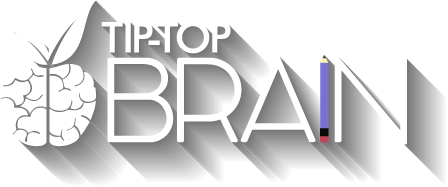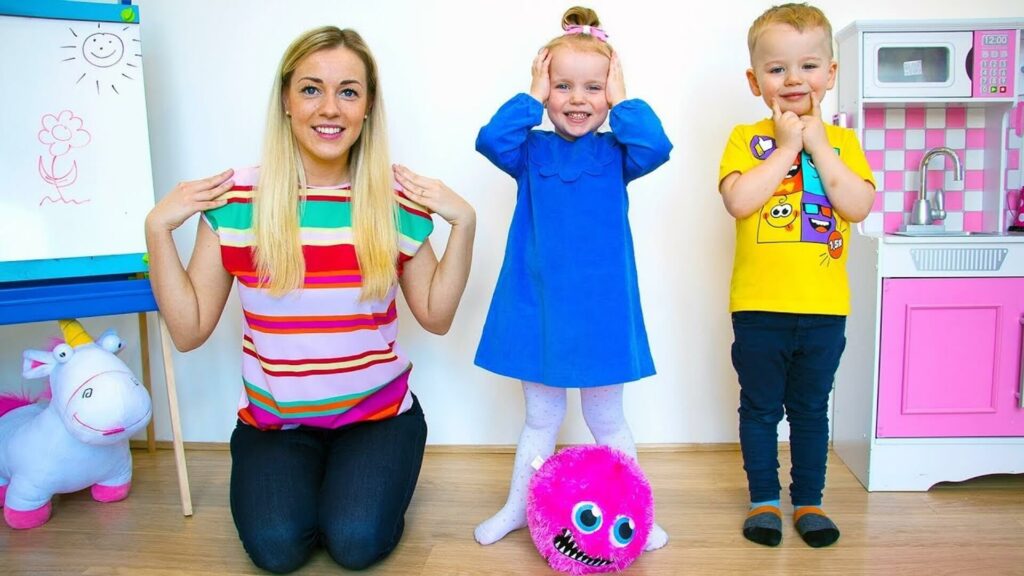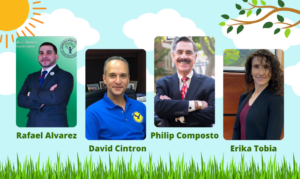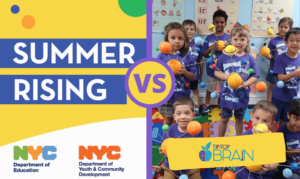“We don’t have time for music in the classroom” and “We’re preparing the student for the next grade level” are phrases that are all too familiar in early childhood education. With the rise of Next Generation standards, the importance of music in childhood development is often overlooked. Music is deemed as an extracurricular activity that falls last on the checklist. We must understand that music is essential for early childhood development. As children explore music and sounds, they make meaning of the world around them. In doing so, children are able to understand themselves and develop their vocabulary, pre-reading, and social-emotional skills. By providing music for children, we are allowing them to appreciate and learn through music. Check out the four benefits of music below:
1. Music Promotes the Development of Fine & Gross Motor Skills
Games, songs, and back and forth play all promote the use of music in fun and engaging ways. These simple activities can develop fine and gross motor skills. This is especially true when clapping, bouncing, tapping, snapping, and dancing occurs. Students may sing and dance to a beat or practice pattern-making through clapping. Singing and moving around in the classroom creates long-lasting memories that build body coordination. Through these practices, music and sound create brain connections in all areas of development. Ultimately, kids music helps to create a relationship between the elements of movement and the body.
Elements of Movement
- The Body: head, neck shoulders, knees, toes, arms, legs, feet, elbows, ankles
- Actions: walk, jump, skip, gallop, wiggle, shake, freeze, pause, clap, snap
- Spatial Awereness: over, under, left, right, in, out, top, bottom, inside, outside, front, behind, around, upside down, below
2. Music Fosters Communication
When music is a part of young children’s lives, they have a greater motivation to communicate with the world around them. Music in childhood years enhances kids communication and imagination through language as many cultures hold immense pride in their music and exposing children to diverse music can be a great introduction to the diverse cultures around them. Music can highlight a variety of instruments and languages as students can listen and sing along to cultural music. Sharing music is a fantastic way to promote a culturally responsive learning environment.
3. Music Creates a Sense of Belonging
Kids music can create a sense of belonging for children by deepening home and school connections. At home, parents can begin to sing to their children at an early age. This may range from tunes to lullabies to songs. By singing to your children, you are creating a strong and healthy bond. Studies indicate that day-old infants “breathe differently depending on whether they are listening to Mozart or Stravinsky” as music helps to soothe premature babies.
Parents can also sing while performing daily tasks. This may look like singing while cooking, singing while folding laundry, or playing music while getting ready for the day. The parent and child can indulge in these sacred moments as they reinforce the bond between the parent and the child. These fun duets may ultimately inspire confidence in your child, a deficit many children wrestle with.
Music in childhood classrooms can also create a sense of belonging. For starters, music in the classroom builds community! Through songs, song play, and chants children can come together and make music as a collective. Through collaboration, children can make connections with the music and their peers. Kids music is a powerful tool that can help set up a comforting environment. Through the benefits of music and increased inclusivity, our children can feel a sense of belonging.
4. Music Promotes Language & Literacy
Music and sound play develop neural pathways dedicated to listening and speaking. Parents that consistently speak to their child or talk out loud promote language and vocabulary. Music and sound play must be considered when creating a literacy-rich environment! Children can copy the sounds they hear to make sense of what they mean and how they make them feel.
When musical elements are introduced in the classroom and the home, rhymes, rhythm, and repetition introduce children to the sounds of phonemes. Words that describe movement encourage vocabulary development. This is a major predictor of later reading success. Kids music also promotes word meaning, the very first step in developing oral and communication skills. Not to mention that students have a blast singing along with their peers in the classroom!
Great Kids Music to Promote Movement & Learning
- Head Shoulder Knees and Toes
- I’m A Little Teapot
- I’m A Little Snowman
- Open Shut Them
- The Itsy-Bitsy Spider
- Going On a Bear Hunt
- Mice Go Missing
- The Wheels on The Bus
- Culture Everyday
- Clap, Wash, and Rinse Your Hands
All in all, music in childhood education is essential for well-rounded development. Together we can continue to embrace and celebrate music for children. Music is a wonderful opportunity for children to develop their fine and gross motor skills, practice communication, feel a sense of belonging, and obtain language and literacy skills. It is clear that music and learning go hand and hand, so what song will you and your child listen to next?







